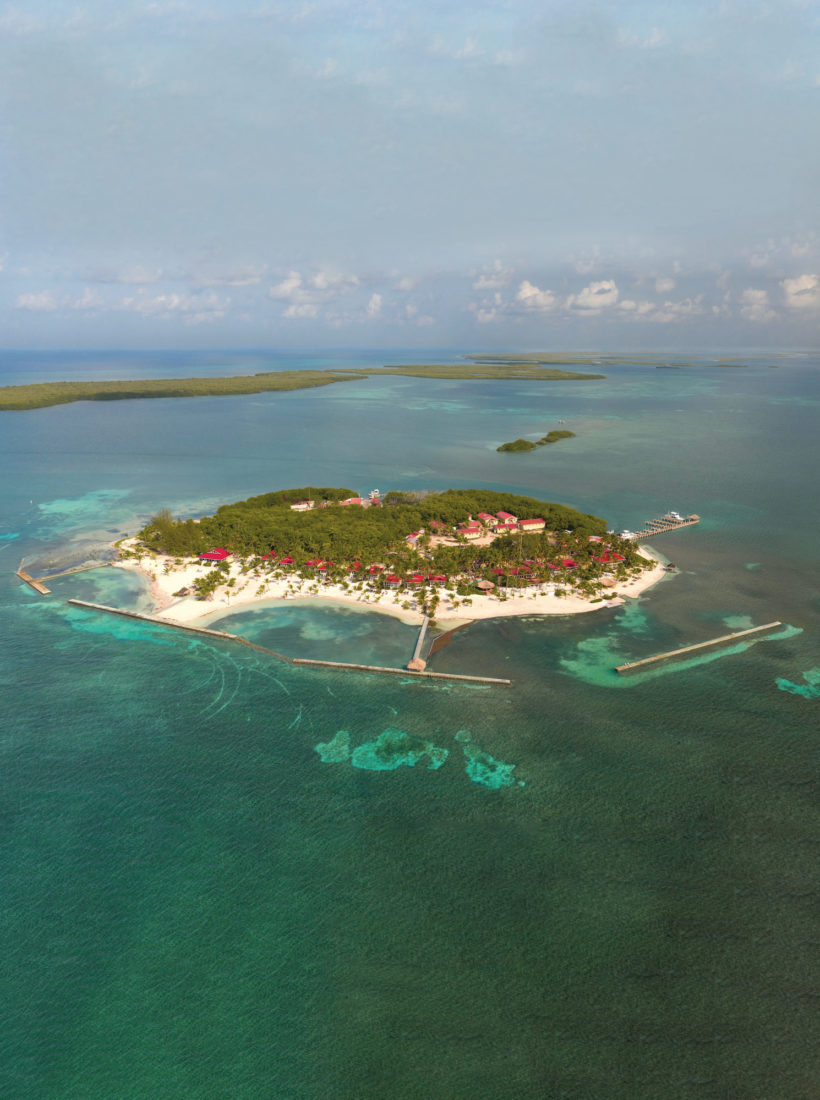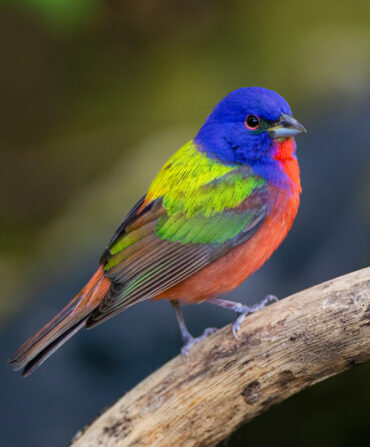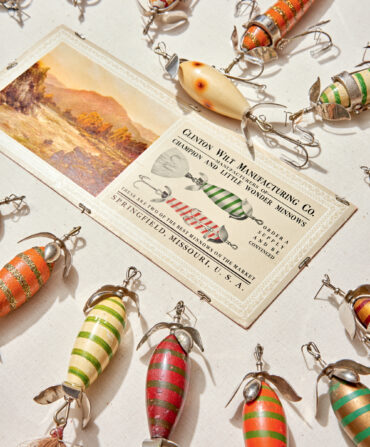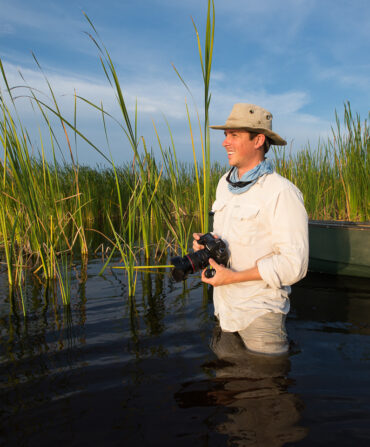“Aye yai yai,” William “Buddy” Johnson groans. “So shallow. So spooky in this water. They can hear you coming. Move slow, slow, slow.”
We’re stalking bonefish on an aquamarine flat inside the coral reef ringing Belize’s Turneffe Atoll, the country’s largest atoll. The water is barely ankle-deep, and the bones’ sickle tails gleam in the sunlight, dorsal fins flip-flopping from side to side as they grub for shrimp and crabs. Johnson knows we have a challenge in these conditions. His father guided bonefish anglers for thirty years across the Belizean flats, and he’s been fishing with him since he was a little boy. Now thirty-six, he wears a diamond stud earring that can’t hold a candle to his broad million-watt smile. Unless the bonefish aren’t cooperating.
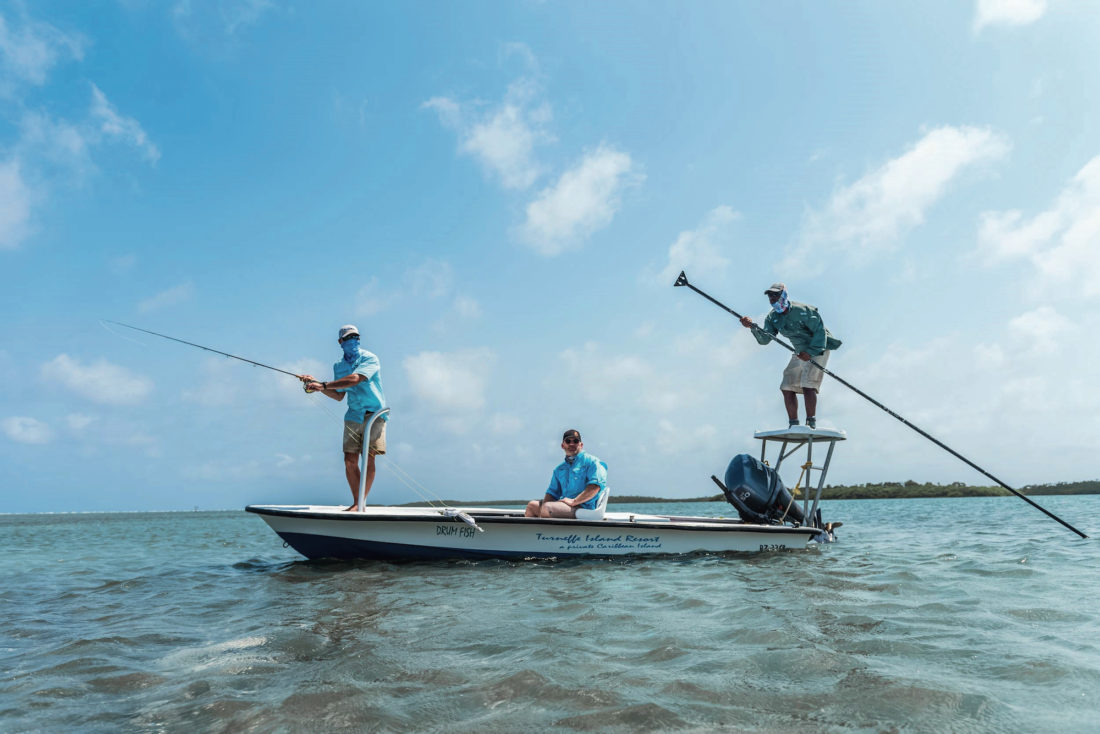
Aye yai yai is his most common quibble. Aye yai yai when I cast too short, or when I cast too long and the fly-line leader across their backs blows out the bonefish schools like a covey of quail. But when the cast is just right, and the rod bends and the reel zings, there is just Johnson’s low, triumphant yes, yes, yes as the fish runs toward that place where the Caribbean Sea and the Belizean sky melt into each other.
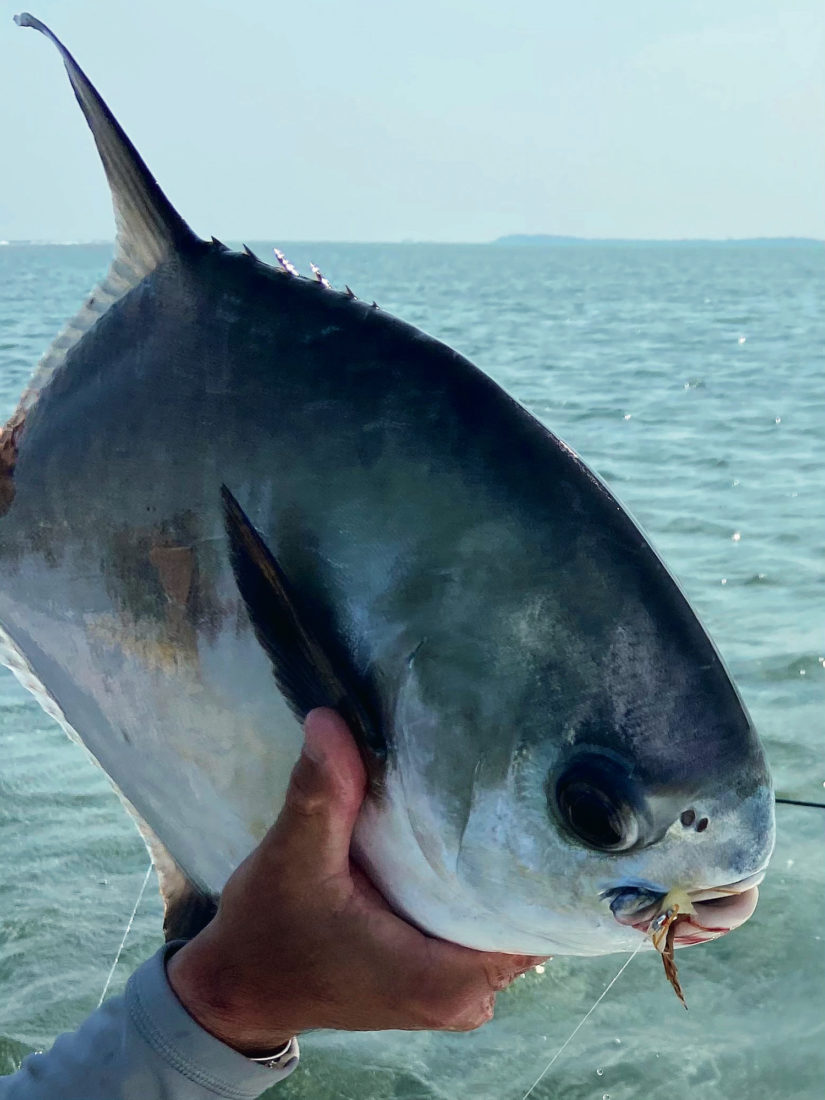
I’ve come to Belize to chase bonefish, tarpon, and permit with my son, Jack. But I’m also here to see how this English-speaking Central American country is positioning itself for postpandemic tourism. Before COVID-19 forced destinations to recalibrate safety protocols and rethink communal gatherings, Belize had already kicked off a major tourism expansion focusing on boutique destinations on both the mainland and the nation’s 450 islands, which give the place a South Pacific vibe within a few hours’ flight of most Southern airports. In the last year or so, at least four Belizean boutique resorts have opened, and another half dozen have undergone significant face-lifts and revivals. Five more are set to debut over the next year, and nearly all of them focus on getting guests into the country’s pristine rain forests and reefs.
With a world going wild over remote, natural locations, the trick for Belize, of course, is to avoid killing the goose that laid such a lush tropical green egg. In 1996, the country pioneered an innovative protected areas program largely funded by visitors. The Protected Areas Conservation Trust (PACT) is supported by a “conservation fee” of U.S.$3.75 paid by overnight visitors, plus a cut of a cruise ship passenger head tax and a 20 percent collection on concession arrangements in what are now more than a hundred protected areas. Belize has long been known for its more intimate offerings, says Misty Michael, who’s worked in marketing for the Belize Tourism Board, and large branded hotel chains have landed here only within the last five to eight years. “Those projects must work within the country’s goals of environmental protection,” she says. “We know what helped us to grow to this point and have no desire to become a mass tourism destination.”
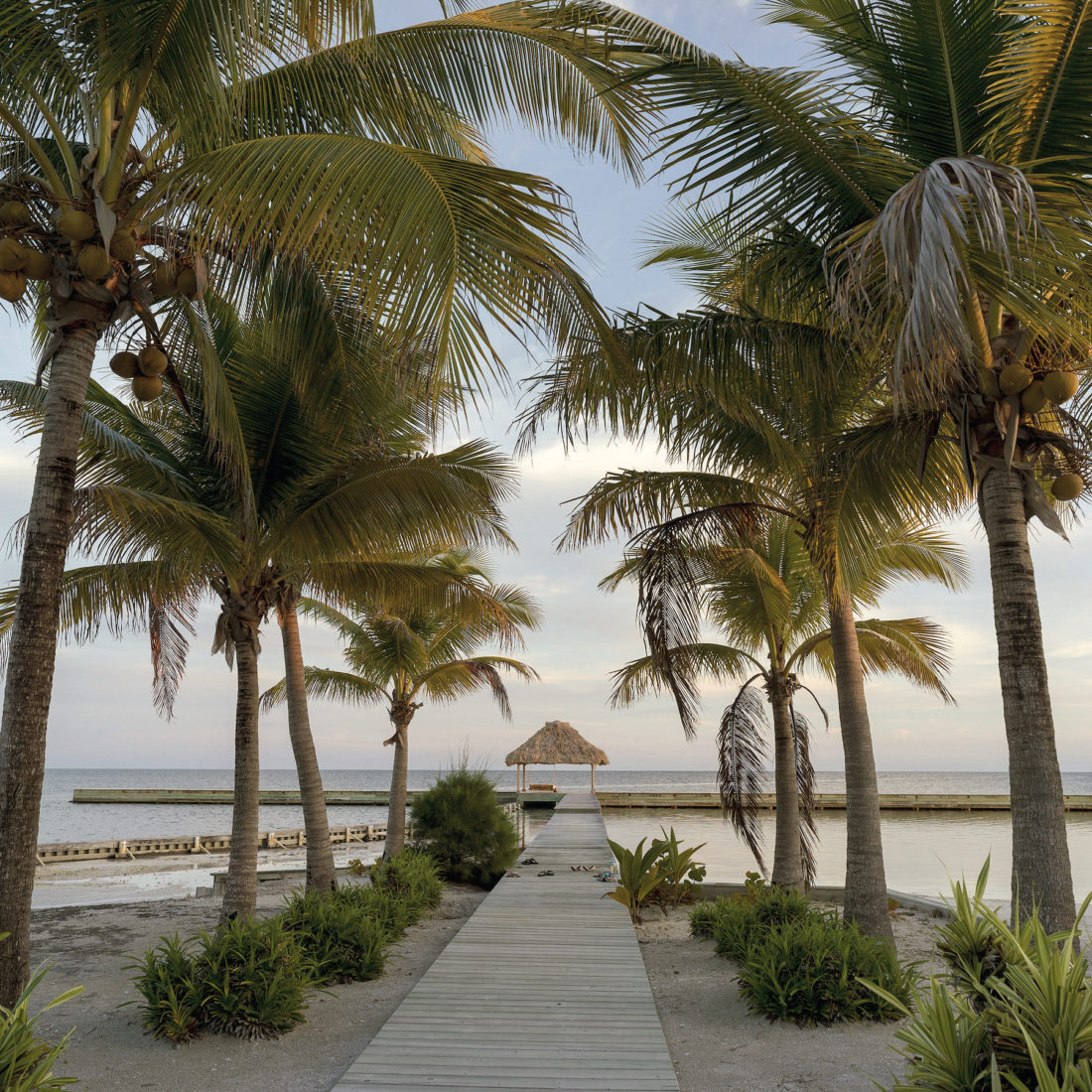
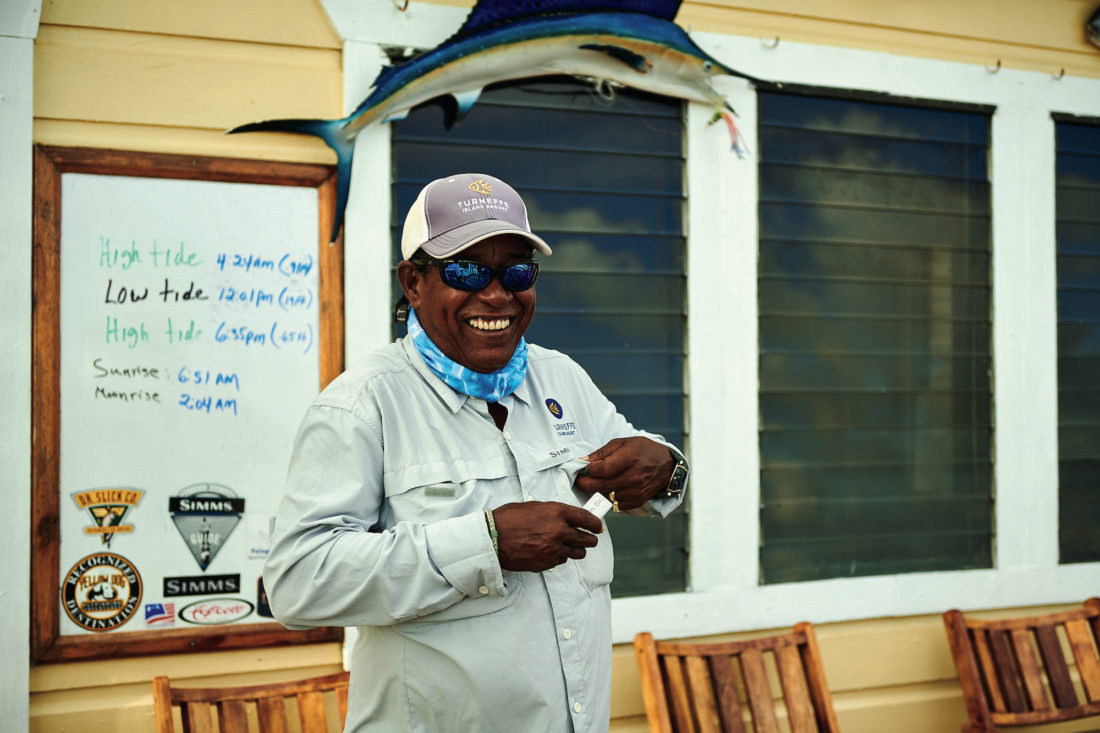
The revitalized Turneffe Island Resort, where we’re staying, is a case study. For starters, it holds a deep history as a tropical get-really-away. The resort lies thirty-five miles off the mainland, on the atoll’s southern tip. Victor L. Barhothy, an American, purchased the tiny island on which it sits, Little Caye Bokel, in 1961 for eight hundred Belizean dollars. Barhothy had owned fishing lodges in Michigan and Islamorada, Florida, and soon opened Belize’s first offshore fishing lodge. Today three of the original guest cottages remain.
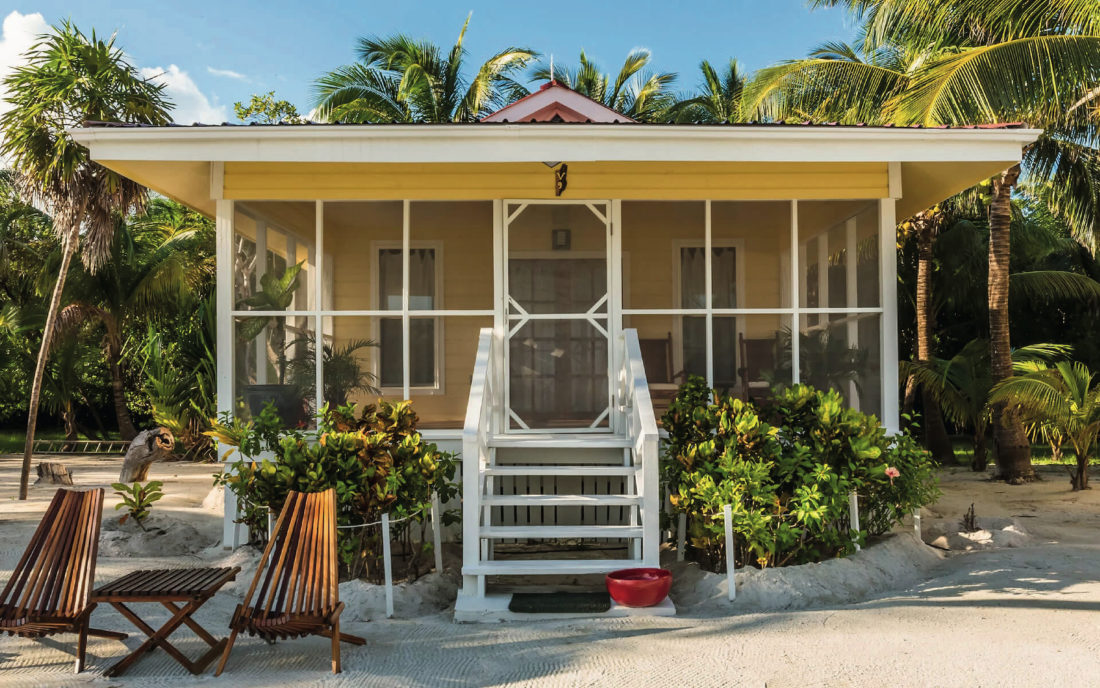
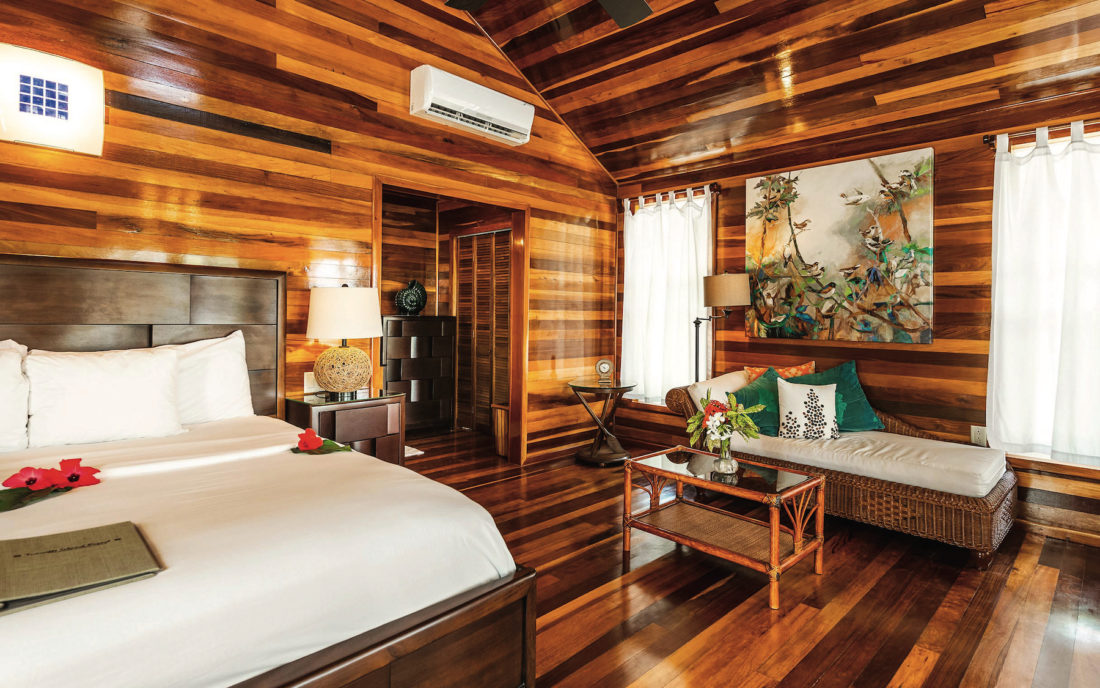
But it’s hardly the roughshod fish camp of yore. Fourteen manicured acres are home to twenty-two guest rooms, with knockout views from nearly every window, as well as a spa, a pool, and a stunning new clubhouse overlooking the open sea. Coffee arrives at our door every morning, and evening means tasting flights of rum and local fish and lobsters served with coconut rice. And as the luxury is being dialed up, so, too, are the adventure options. For divers, the famed Great Blue Hole marine sinkhole sits only thirty miles away, while the Elbow, a deep coral wall known for eagle ray aggregations, perches just off the resort’s southernmost tip. It’s a popular spot for dive trips from the mainland, says Aly McGahey, who pairs her role as Turneffe Island Resort’s general manager with a master’s in marine biology. “But we’re already here,” she adds with a grin. In addition to fishing and diving, guests can book a helicopter for day trips to the mainland to tour waterfalls and Mayan ruins.
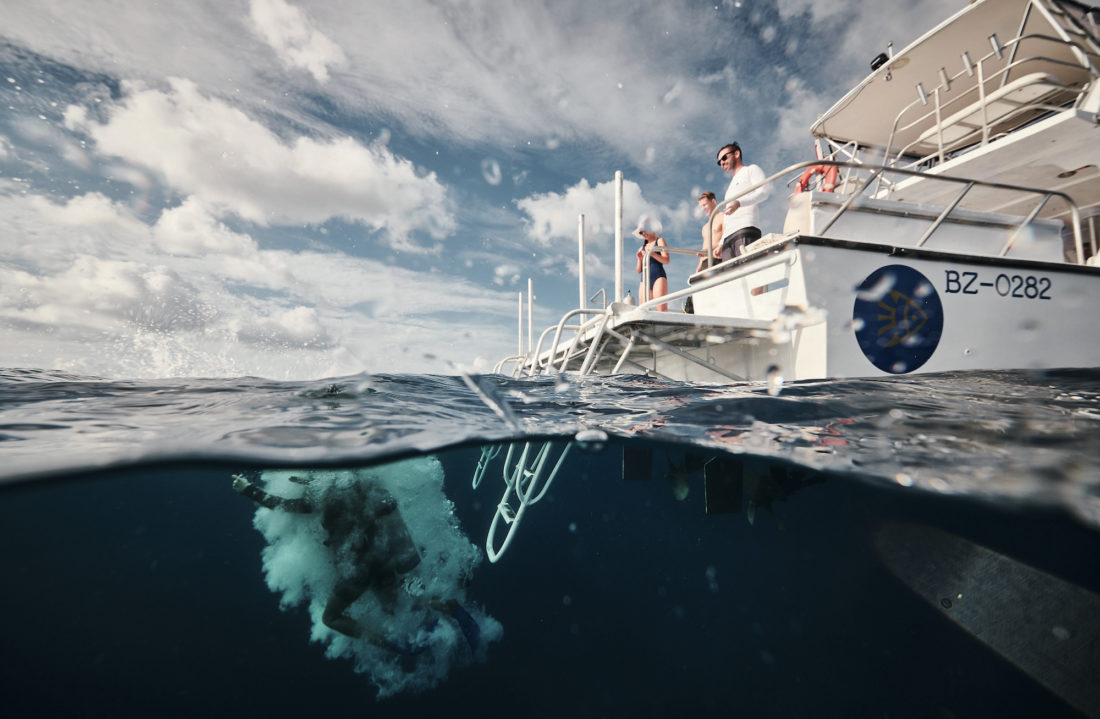
All the options conspire to unravel the focus Jack and I have on fly fishing, but we stay on task. The next day is truly outstanding. More bonefish, along with an epic chase of feeding tarpon as Johnson poles the skiff across a quarter mile of flats. Then, motoring from one emerald infinity to another, Jack suddenly spies a half dozen fish coursing along the mangroves.
“Permit! There!” Johnson throttles back the skiff and makes a wide circle, picking up the long pole to stalk the fish for the last twenty feet. If a tarpon is the silver king, permit bring to mind the feats of Lancelot—catching one is the Holy Grail of fly fishing on the flats.
I watch the fish semaphoring between the dark turtle grass and the sand bottom, and time my cast as I see the lead fish move onto the lighter background. The first cast is too far in front, but the second settles nicely, and on the second strip a single black knife edge turns to the fly. I strip with a rising heartbeat until the black shape shudders, and for a split second I don’t know if the permit turned away. Then the line goes tight, and we all know that the unlikely has happened.
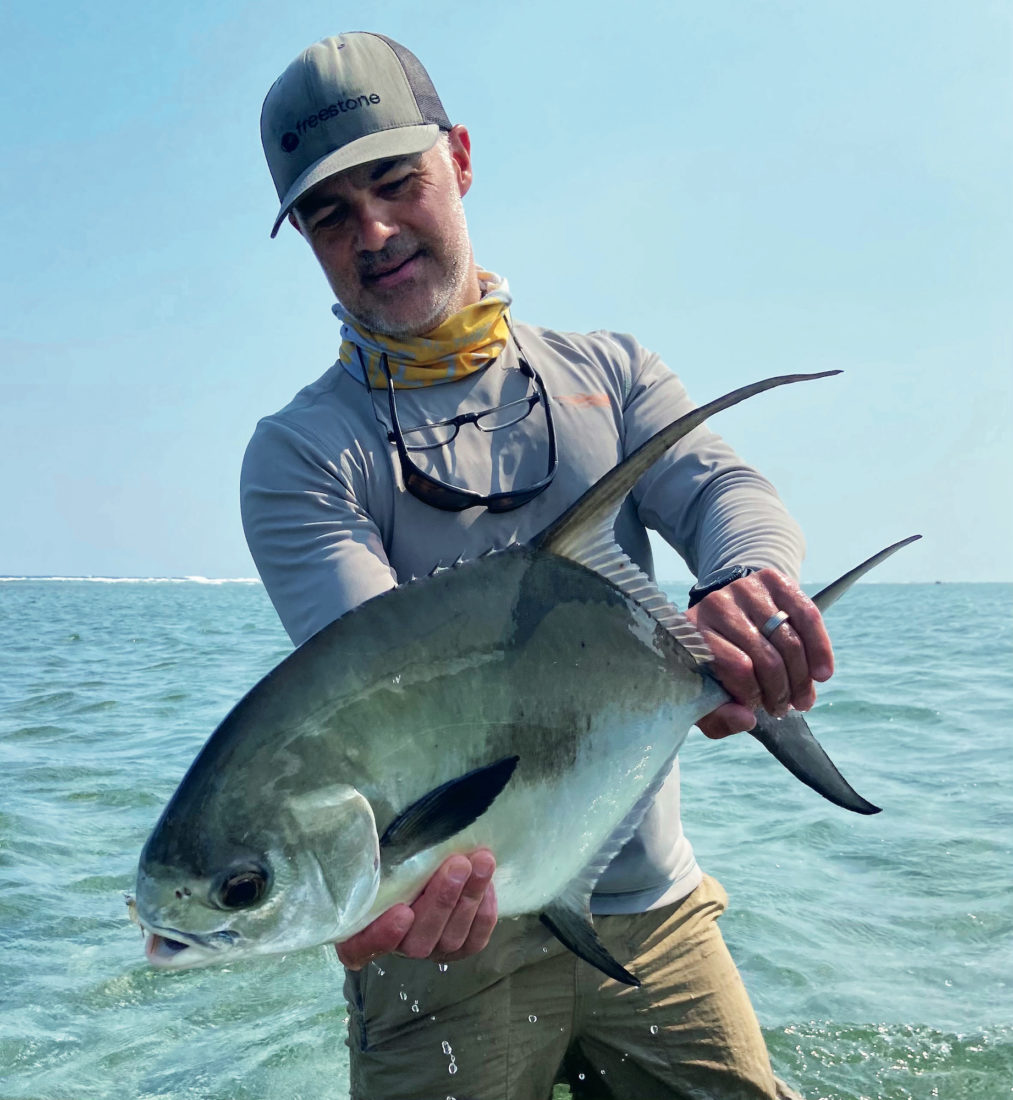
“Feet! Feet! Feet!” Jack hollers as the fly line stacked on the deck rips wildly through the rod. I lift my right foot off a coil of line—disaster averted. Ten minutes later, I hold my first permit, like a pewter serving platter come to life in my hands.
It’s not a big fish, but it’s a big fish story. And it’s not really supposed to happen like this—the toughest flats fish coming to hand this easily.
Jack congratulates me on the catch, then shakes his head.
“What’s that German word you were telling me about earlier?” he asks.
I remember the conversation. “Gluckschmerz,” I say, grinning. “When someone else’s good fortune makes you all grumpy and whiny.”
“That’s the one,” he says. “I might be fluent in German by the end of the day.”



